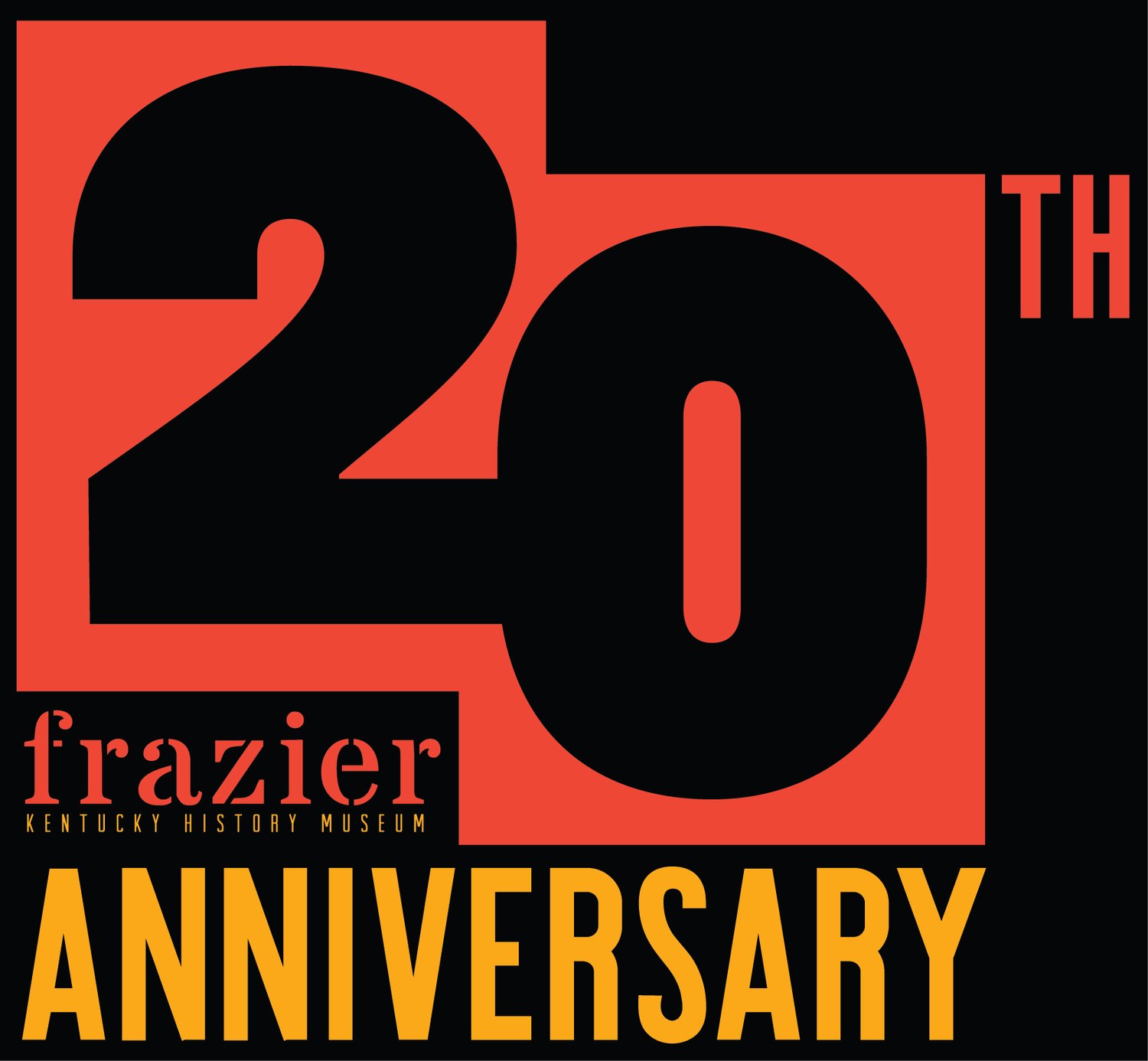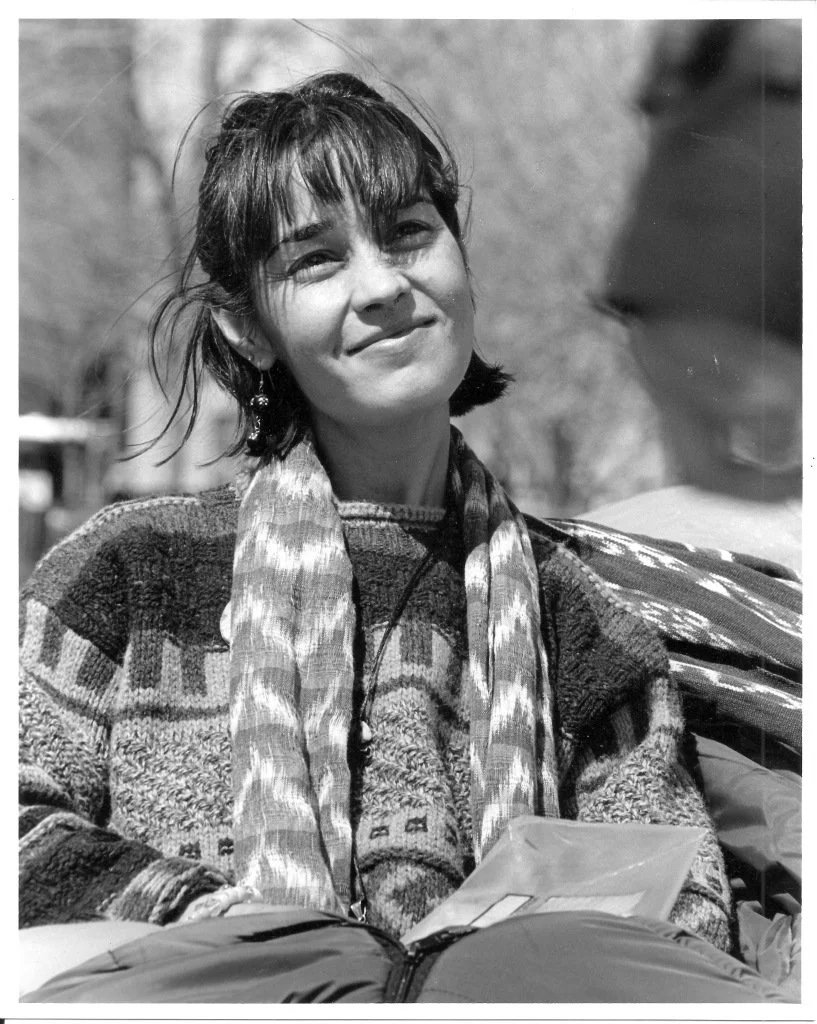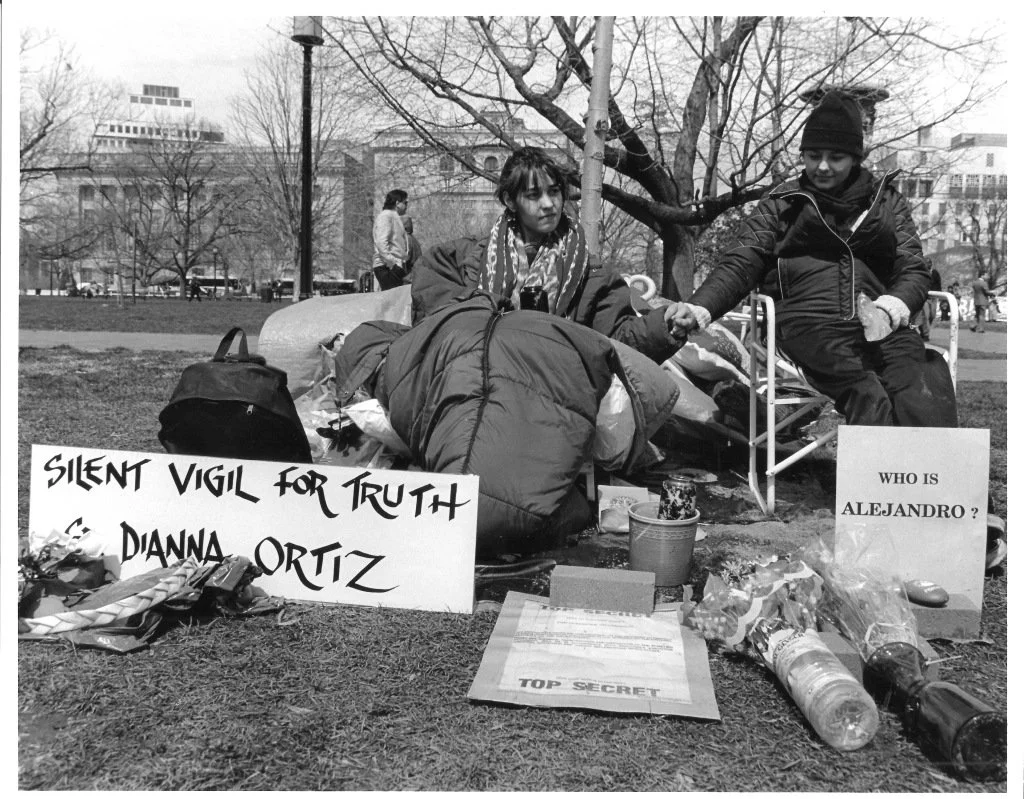1861 Balloon Flight Over Kentucky, Five Artifacts From Beecher Terrace, Anti-torture Activist Sister Dianna Ortiz, and More
Good Monday morning,
We hope each and every one of you had a wonderful Thanksgiving holiday with your loved ones. Many of you probably spent the weekend starting your holiday shopping, while some of you overachievers have already finished. Whether you’re starting or finishing, a visit to the Frazier Museum Store should be on your list of stops for finding the perfect gift. Giving is such an important part of the holiday season — there’s no better feeling than when that perfect gift brings excitement and appreciation.
We at the Frazier appreciate every gift we’re given. Your gifts allow us to educate our young people, produce insightful discussions on topics that are important to our community, and share the history of Kentucky with residents and visitors from around the world. There is no greater gift than being able to uplift our neighbors and our community. Tomorrow marks the ninth annual Giving Tuesday, a global movement that inspires hundreds of millions of people to give, collaborate, and celebrate generosity. It is a day when we ask you to help us continue to serve over 20,000 schoolchildren, tell the stories of Kentucky with exhibitions like Cool Kentucky and West of Ninth, and provide educational, informative, and fun content through our weekly issues of Virtual Frazier Magazine. If you value the work we do and the resources we provide, we ask you to please consider donating.
Tomorrow, find our Giving Tuesday message on our social media platforms. Please share the link to give, and share why you value the Frazier.
In this week’s issue of Virtual Frazier Magazine, communications and research specialist Simon Meiners shares the story of human rights activist Dianna Ortiz, a Roman Catholic sister of the Ursuline Order based in Daviess County, Kentucky who passed away in February. Plus, manager of youth and family programs Heather Gotlib identifies five rare objects from Beecher Terrace on display in West of Ninth and curator Amanda Briede highlights the new mural in Lexington honoring LGBTQ+ icon Sweet Evening Breeze.
Thanks for reading,
Lonna Versluys
Director of Advancement
Frazier History Museum
This Week in the Museum
Video: Balloonist Thaddeus Lowe’s 1861 Flight Over Kentucky
I’m getting pretty excited about our “Cool Kentucky: Independent Spirits” program with Tori Murden McClure and Dawn Landes (and Dawn’s musical guests). It’s bound to be a night of great insight and art. But it got me thinking: The idea of being the first person to cross the Atlantic Ocean in any vehicle is a curious notion. Balloonist Thaddeus Lowe had somewhat similar goals to Tori back in the 1860s, though his plan didn’t go as expected — which is something I think Tori could understand more than most.
Mick Sullivan
Curator of Guest Experience
West of Ninth: Five Rare Artifacts in the Beecher Terrace Case
Case of Beecher Terrace artifacts on display in West of Ninth: Race, Reckoning, and Reconciliation, November 24, 2021
What comes to mind when you think of the word “archaeology”? Images of Indiana Jones being chased by a rolling boulder? People dusting off ancient stones to reveal hidden doors to untouched treasures from thousands of years ago?
Karolyn Smardz Frost, a favorite archaeologist of the Frazier, cracks the excellent joke that, as an archaeologist, “My life is in ruins.”
Ruins are certainly part of it, but archaeology is all around us. What’s most intriguing to an archaeologist is what’s left behind by people who lived both long ago and not so long ago.
The Beecher Terrace dig that Corn Island Archaeology began in January 2017 focused on what was left behind by people who inhabited the Russell neighborhood, once referred to as the “Western Extension” or “Western Subdivision,” which was first settled after the Civil War. The archaeology firm uncovered the stories of a vibrant, diverse neighborhood where many fascinating people lived — including Sarah Fitzbutler, who, born in one of the free Black communities that emerged in Canada during the time of the Underground Railroad, would move to Louisville and become the first Black woman in Kentucky to obtain a medical degree.
Artifacts from the Beecher Terrace site can be found in our West of Ninth exhibition, and each one tells a fascinating story. What follows is a list of my five favorites. Come visit us and see if you can find them for yourself!
Bag of ninety coffee beans, date unknown. Martin or Nitzken family.
Perfume bottle, 1820 – 79. This bottle of perfume was imported from Paris. Fun fact: the Exhibits department tells me that, although they’re not allowed to open this bottle, when it’s not encased in glass, it smells strongly of bergamot, the scent that gives Earl Grey tea its vaguely Fruit Loops flavor!
Tipped, hand-ink light bulb, 1910 – 23. Its filament is still intact.
Celluloid decorative comb, 1869 – 1940. This object was salvaged from 929 – 931 Walnut Street, which is today named Muhammad Ali Boulevard. I wouldn’t think of putting the words “plastic” and “1860s” in the same sentence, but knowing that goods like this were coveted for the way they mimicked expensive materials like tortoiseshell is fascinating!
Rockingham glaze dog’s head handle, 1830 – 1900. When choosing objects, our curator Amanda takes every opportunity she can to include dogs in our exhibitions!
Heather Gotlib
Manager of Youth and Family Programs
Curator’s Corner: Sweet Evening Breeze Mural in Lexington
Mural of Sweet Evening Breeze in Lexington, 2021. Credit: Kevin Nance, UnderMain.
In late October, a new mural titled Mother of Us All was unveiled at 161 North Limestone Street in Lexington, Kentucky. Painted by Baltimore-based street artist GAIA, the mural features James Herndon, or “Sweet Evening Breeze,” a prominent figure in Lexington’s LGBTQ+ history. I featured Sweet Evening Breeze in one of my “Curator’s Corner” pieces back in June and in the “LGBTQ+ Kentucky” section of Cool Kentucky, so I was excited to see the beautiful mural in her honor! The mural and four others were painted as part of Lexington’s 10th Annual Street Art Festival and sponsored by PRHBTN, an organization that celebrates artforms that have traditionally been marginalized. Based off an iconic 1979 image by John Ashley and several other images from the Faulkner Morgan Archive, the mural features images of Sweet Evening Breeze posing in her home, reclining on a sofa, and with other members of Lexington’s drag and/or crossdressing community. I’m so excited to see an important member of Kentucky’s LGBTQ+ history honored in this way and can’t wait to check out the mural the next time I am in Lexington!
Amanda Briede
Curator
Saluting our Veterans: The 80th Anniversary of Pearl Harbor
It is a date which will live in infamy: Those famous words from President Franklin Roosevelt refer of course to December 7, 1941, the day Japan launched a deadly strike on U.S. Naval and military forces in Hawaii.
This year will mark the eightieth anniversary of the attack on Pearl Harbor.
Join the Frazier History Museum and Honor Flight Bluegrass as we salute our heroes with a special program on Tuesday, December 7 at 11 a.m.
David Payne
One of Kentucky’s only living survivors of Pearl Harbor will join us, 100-year-old David Payne of Hardin, Kentucky.
I’ll be sharing more of his story in our December 6 issue of Virtual Frazier Magazine.
Until then, save the date to join us with David Payne, several other veterans from World War II, Heather French Henry singing “God Bless America,” Janet Essenpreis from Ladies for Liberty, as well as WWII memorabilia and military vehicles.
The program is free with the price of admission.
Veterans and two family members receive free admission.
Of the sixteen million Americans who served in WWII, only about 240,000 are still with us.
We hope you will join us to pay tribute to their service and sacrifice.
Rachel Platt
Director of Community Engagement
Holiday Family Day and Winter Break Camps
West of Ninth exhibition opening attendees participate in a community art project involving murals made by artist Victor Sweatt, September 18, 2021
December is going to be a really fun month at the Frazier, whether you are looking for an activity to do as a family or looking for something for your child to enjoy over winter break.
December 18 is the holiday kick-off with our Holiday Family Day, which is turning out to be an extravaganza! I’ve always looked forward to our Holiday Second Saturdays, when the museum feels so festive and there’s so much enjoyment in the air. After a 2020 hiatus, this day is back and better than ever, with community partners and special tours and performances. Plus, we’ve added a really exciting component: Artist Victor Sweatt will be returning after spending the West of Ninth Community Opening with us, and we will bring back mural painting. Don’t miss this chance to contribute to a piece of art that will be placed in our West of Ninth gallery. We’re offering one free admission per family for this day in exchange for a contribution to Clothe the West’s Holiday Shop.
Winter Break Camps are also still open to registration, but reserve your space soon before we run out of room! Our campers always have a great time getting to have some active fun while it’s cold outside, seeing their friends from the summer and making new ones! These camps are booked by the day, so whether you need childcare during the break, a boredom buster for those long winter days, or just a day for you to catch up on holiday errands, we are here for you with the perfect solution! You can find more information and sign up here.
Heather Gotlib
Manager of Youth and Family Programs
Bridging the Divide
Mark Hogg on WaterStep and Sip Spring Water
Sip Spring Water bottle design
The number of people in the world who lack access to safe and clean water amounts to a staggering figure. Any guesses?
The answer might surprise you: 748,000,000.
A non-profit based here in Louisville is helping solve that access issue around the world.
WaterStep founder Mark Hogg
Founded by Mark Hogg, a man of faith and vision, WaterStep is a non-profit established in 1995.
I have known Mark for years, having first connected with him in my past life at WHAS-TV.
In my Bridging the Divide interview, we talk about how WaterStep is teaching people safe water solutions around the world, and how to use the tools created by WaterStep.
We also discuss a new product we’re selling at the Frazier store called Sip Spring Water, and how your purchase can help WaterStep and so much more.
The revolutionary bottle is designed to break down in five years instead of hundreds.
It’s another example of how WaterStep is bridging divides, and leading the way on saving people and our planet.
Rachel Platt
Director of Community Engagement
History All Around Us
Sister Dianna Ortiz holds a vigil at Lafayette Park in Washington, D.C., spring 1996. Credit: Rick Reinhard.
I first learned about the late anti-torture activist Sister Dianna Ortiz earlier this year when The Catholic Worker published an obituary for her. I’m embarrassed to admit that, although I’m both native to Kentucky and critical of U.S.-sanctioned torture, I’d not heard of Sister Ortiz before. So I’d like to share her story with you, our readers. But note: this article does include some details of extreme violence.
Born in Colorado Springs, Colorado and raised in Grants, New Mexico, Sister Dianna Ortiz (1958 – 2021) was the daughter of a homemaker and a uranium miner. At age six, she first showed an interest in joining a religious order. In 1976, for her senior year of high school, she relocated to Maple Mount in Daviess County, Kentucky — the riverside western Kentucky county whose largest city is Owensboro. In 1977, following her graduation from the old Mount Saint Joseph Academy, she became a postulant with the Ursuline Sisters at Maple Mount.
From 1983 to 1985, she taught at Immaculate Conception School in Hawesville, a town in Hancock County, and from 1985 to 1987, she taught at Blessed Mother School in Owensboro. “The children loved her and she loved them,” Sister Amelia, then-superintendent of schools for the Diocese of Owensboro, recalled.
In 1987, Sister Ortiz moved to the western highlands in Guatemala as a missionary. Her goal, as she later stated in an interview with Robert F. Kennedy Human Rights, was “to teach young indigenous children to read and write in Spanish and in their native language and to understand the Bible in their culture.”
On November 2, 1989, she was kidnapped from a retreat center at gunpoint by three uniformed Guatemalan security forces — at a time when the U.S. was assisting and training Guatemalan security forces — who then raped and tortured her repeatedly. During her twenty-four-hour period of captivity, Sister Oritz was subjected to 111 cigarette burns. She was suspended by her wrists over an open pit filled with rats and bodies of men, women, and children, some of whom had been decapitated. Her captors forced her to stab another woman, a fellow detainee, photographing and videotaping the act to use as blackmail.
“I tell you this story only because it reflects the suffering of hundreds of thousands of people in Guatemala, a country ravaged by a civil war that began in 1960 and lasted thirty-six years,” she later said. “Most of the victims, like me, were civilians targeted by government security forces.”
According to the Inter-American Commission on Human Rights, “Sister Ortiz was placed under surveillance and threatened, then kidnapped and tortured, [and] agents of the government of Guatemala were responsible for these crimes… including violating Dianna Ortiz’s rights to ‘humane treatment, personal liberty, a fair trial, privacy, freedom of conscience and of religion, freedom of association, and judicial protection.’”
According to Sister Ortiz, “Alejandro” — a fourth man who witnessed her torture — seemed to be an American: He spoke with a thick American accent and spoke of contacts with the U.S. embassy. He later intervened in her torture and ordered her release. “Idiots, she’s a North American! Let her alone,” he told her captors in American-accented Spanish, before helping her get dressed. He then escorted her to a gray Jeep and insisted it was all a case of mistaken identity, promising to take her to a “friend” at the U.S. embassy.
In one interview, she said that a week after her ordeal, before any thorough investigation had been conducted, the U.S. ambassador suggested she was a political strategist. He accused her of staging the incident so as to pressure the U.S. to cut off military aid to Guatemala.
“In January 1990, the Guatemalan defense minister publicly announced that I was a lesbian and had staged my abduction to cover up a tryst,” she said. “The minister of the interior echoed this statement and then said he had heard it first from the U.S. embassy. According to a congressional aide, the political affairs officer at the U.S. embassy, Lew Anselem, was indeed spreading the same rumor.”
In 1997, the Organization of American States completed a four-year investigation into Sister Ortiz’s ordeal. It concluded both that she had indeed been abducted and tortured by agents of the Guatemalan government and that the details of her testimony were credible. The investigation further concluded that the Guatemalan government had “engaged in repeated unwarranted attacks on her honor and reputation.”
Following her 1989 abduction and torture, Sister Ortiz underwent extensive counseling. In 1991, she and nine others sued retired General Héctor Gramajo, a former minister of defense for Guatemala, for human rights abuses. In 1995, a federal judge in Boston ordered Gramajo pay $47.5 million to Sister Ortiz and eight Guatemalans, $5 million of which was to go to Sister Ortiz. But Gramajo never paid, and in 2004, he and his son were killed by a swarm of Africanized bees that attacked them on their ranch.
Sister Dianna Ortiz and a fellow demonstrator hold a vigil at Lafayette Park in Washington, D.C., spring 1996. Credit: Rick Reinhard.
Sister Ortiz devoted the rest of her life to anti-torture activism.
In 1996, from Palm Sunday [March 31] to early May, she held a vigil opposite the White House in Lafayette Park in Washington, D.C. — her goal being to uncover the truth about her abduction and torture. Wrapped in a sleeping bag for warmth and a straw hat for sun protection, she spent twenty-three hours a day in the park, distributing a written statement explaining her vigil to passersby. The vigil ended in May when the CIA declassified many of the documents she had requested; however, Sister Ortiz did not get the answers she was seeking.
“Ultimately, although 20,000 pages of documents were released, Dianna was denied the information she hoped to uncover: She never learned the real name of the North American man known as “Alejandro” who was present during her torture, a man she was sure was an agent of the U.S. government,” Catholic Nonviolence Initiative coordinator Judy Coode writes. “Despite that frustration, the community that encircled Dianna received a tremendous blessing from that time of vigil and prayer. Dianna’s gentle, persistent nonviolent witness was strategic; it was spiritual; it was active; it was deeply powerful.”
From 1994 to 2000, Sister Ortiz served as a grassroots organizer for the Guatemalan Human Rights Commission. In 1998, she founded the Torture Abolition and Survivors Support Coalition International to advocate for the abolition of torture and to provide support to survivors of torture. She served as the organization’s executive director for the next decade. In 2002, she published a memoir titled The Blindfold’s Eye: My Journey From Torture to Truth.
She testified before the U.S. Congress about human rights and torture. From 2010 to 2012 and again in 2020, she served as deputy director of Pax Christi USA, a Catholic peace and justice movement that advocates against war, violence, and systemic racism.
Sister Ortiz paid her last visit to Maple Mount, Kentucky in July 2019. She died February 19, 2021 in Washington, D.C. following a battle with cancer.
Sources
Watson, Russell. “What are Necessary Evils.” Newsweek. April 9, 1995.
Barger, Brian. “U.S. diplomats doubted nun’s story.” CNN. May 9, 1996.
Lawrence, Keith. “Sister Dianna Ortiz died at 62.” The Owensboro Messenger-Inquirer. February 20, 2021.
Seelye, Katharine Q. “Dianna Ortiz, American Nun Tortured in Guatemala, Dies at 62.” The New York Times. February 20, 2021.
Coode, Judy. “The gentle strength of nonviolent witness.” Pax Christi International Peace Stories. May 9, 2021.
Simon Meiners
Communications & Research Specialist
Juggernaut Jug Band Five-decade Retrospective CD Release Party
Detail of front cover of Washboard Man / Doodle Le Doo Blues by The Juggernaut Jug Band. Credit: Art Atkinson.
In 1972, a band comprised of four 1968 Waggener High School graduates playing a form of music ‘born’ in Louisville around 1900 helped make the Butchertown Pub Louisville’s place to go — so it’s only fitting that on December 5, 2021, Louisville's now-venerable Juggernaut Jug band returns to their original home to help celebrate the 88th anniversary of Prohibition’s repeal with a two-CD release party. Held at the Whirling Tiger — formerly known as Odeon, and originally called the Butchertown Pub, located at 1335 Story Avenue — the event will commemorate five decades of “Preaching The Gospel of The Jug” to appreciative audiences in 47 states and all 15 Canadian Provinces.
One CD is exclusively dedicated to the band’s original tunes while the second pays homage to some of their favorite classic jug band tunes from the genre’s heyday in the 1920s and ‘30s.
The event is sponsored by Log Still Distillery.
Staff Pick
Bourbon Staff Pick: Heidi Janes on Old Bardstown Bottled-in-Bond Bourbon
Heidi Janes holds a bottle of Old Bardstown Bottled-in-Bond Bourbon, November 19, 2021
The Frazier History Museum is the official starting point of the Kentucky Bourbon Trail®, so it seems only fitting we should lift a glass to the holidays and say cheers. From November 8 through December 27, each issue of Virtual Frazier Magazine will feature a different staff member’s Bourbon pick for the holidays. Keep in mind, not everyone is a Bourbon expert; however, we all have our reasons for what we like, and we’ll share those with you. And yes, every featured product is sold in our Museum Store, so thank you for asking — and buying!
As a history enthusiast, I love the story of the Bottled-in-Bond Act of 1897. From rectifiers attempting to taint the whiskey, we got the first consumer protection law in America. You know a bonded Bourbon is going to be good from the start since it has to follow the stipulation of all the grain from one distilling season, aged in a federally protected warehouse, 100 proof, and a minimum of four years in those beautiful charred oak barrels.
Willett has taken those regulations and created a pure joyful party once it hits your taste buds. From the first sip, you already have numerous notes of caramel, butterscotch, and oak coming to together in perfect unison. I have not even mentioned the price! For a mere $26 (yes, you read that right!), you can get this Bourbon that is so versatile you need to invent ways to drink it: neat, on the rocks, or mixed in a cocktail. The options are endless: especially if you’re drinking responsibly, of course!
Heidi Janes
Manager of Visitor Services
Holiday Staff Pick: Amanda Egan on Pride Merchandise
Amanda Egan poses with pride merchandise in the Frazier’s Museum Store, November 3, 2021
We take great pride in the Frazier’s Museum Store, which has unique offerings that celebrate our state, our heritage, Frazier exhibitions, and so much more. It may be the perfect place to do your holiday shopping, and we are here to help you. From November 8 through December 20, each issue of Virtual Frazier Magazine will feature a different staff member highlighting their favorite items sold in the store.
When entering our Museum Store, my eyes immediately turned to the fantastic pride merchandise. Some may get stopped by our massive Bourbon selection or our Ale-8 vending machine, but the ability to see pride merchandise all year long makes my heart happy!
You are correct in thinking that absolutely nothing stopped me from purchasing these items!
This month, our community received fantastic news. The Louisville Pride Foundation and Sweet Evening Breeze, both nonprofits dedicated to serving the LGBTQ+ community in Louisville and Kentucky, have announced that beginning in 2022 they will open an LGBTQ+ Community Center above the Asia Institute — Crane House and a resource center for homeless LGBTQ+ youth in the Highlands Professional Plaza building on Barret Avenue, respectively.
Although the Museum Store is filled with many unique and creative items all year long, during this holiday season, you may be more inclined to celebrate those individuals that bring a rainbow to your life. Heck, maybe you are the rainbow! Which, in that case, celebrate yourself! No shame! I spread my pride throughout the office with my brand new socks!
Amanda Egan
Membership & Database Administrator


















